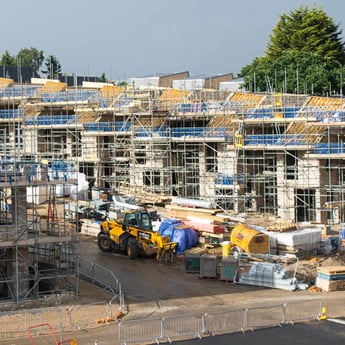Are the revisions to the NPPF enough?

Jo Davis looks at the UK housing market crisis and the national vision and innovation needed to deliver the 1.5 million new homes needed by 2022.
It’s been just over a year since the government declared the housing market “broken”, and in that time it has become increasingly clear that the UK desperately needs new homes of all types and tenures if the Government target of 1.5 million new homes by 2022 is to be met. It has taken a long time, but now with the draft revisions to the NPPF we are finally seeing the Government put in place effective policy mechanisms to drive up housing delivery rates. But will the new steps be sufficient?
Simply put, the Government needs to strengthen housing delivery across all parts of the residential sector. Alongside this commitment from the government, all delivery organisations, developers, investors and the public sector alike, need to step up to the plate. This is a long term strategy, and the Government’s willingness to spend significant money on strategic infrastructure to support housing delivery, as demonstrated with the Housing Infrastructure Fund, is to be welcomed. However, it is crucial that this is matched by a willingness amongst local authorities and the house building industry to fund and deliver vital social infrastructure, affordable housing and employment development, in order to create the sustainable communities of the future.
We support the standardisation of the approach to calculating housing need to reduce time and cost burdens on the industry, but question the practicality of applying more weight to development viability testing at the local plan stage. This is because key aspects of the viability appraisal will not only be broad estimates at this point but also open to significant change as the proposals evolve and detailed site information becomes available. As a result, this aspect demands further consideration. The principle of the housing delivery test would also seem a sensible progression, but will need to be tested in practice in the context of other policy mechanisms, including that of Green Belt and the case for its release to meet housing need.
More emphasis should be placed on creating a national vision that will seek to drive up design standards in housing. There is a clear need to enhance standards of design and construction if we are not to repeat the mistakes of the past in a rush to build more homes. Implementing innovative construction methods will be critical in delivering more homes at pace, but this should not be an excuse for lower quality design standards.
While broadly speaking the proposed reforms to the NPPF should create a more effective planning system and increase housing delivery as a result, there are some key issues that need to be addressed. For a start, this step change in housing delivery rates would necessitate a herculean effort from both local authorities and the house building industry in order to find the relevant funding and resources to ensure that barriers to delivery are broken down. There is no time to lose. With these new policy mechanisms in place, it is time to forget where the blame lies for housing delivery in the past and focus on the future. The proof will be in the pudding.
